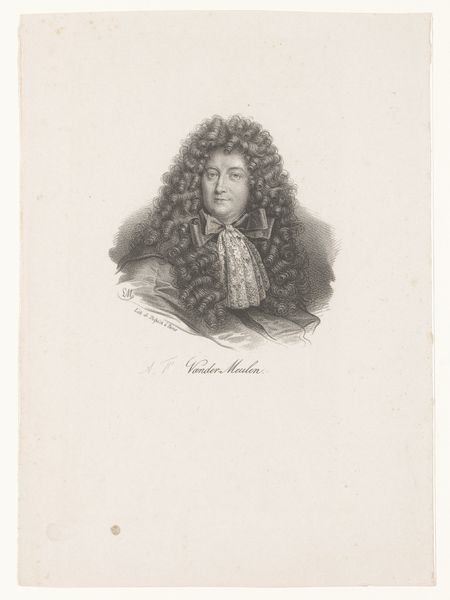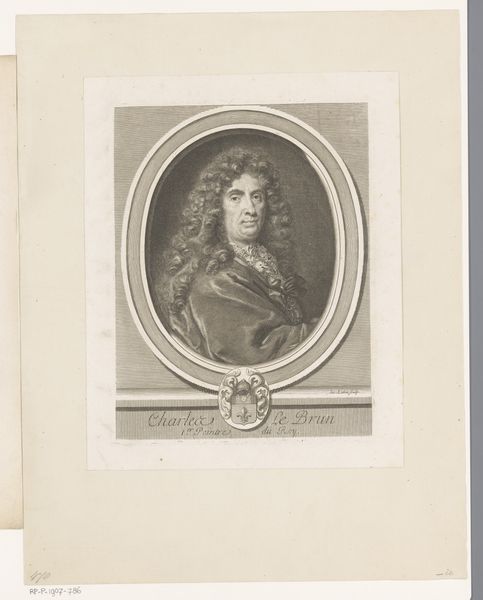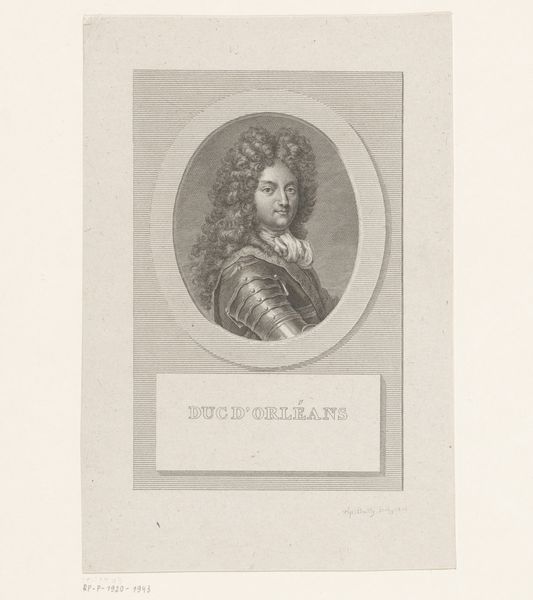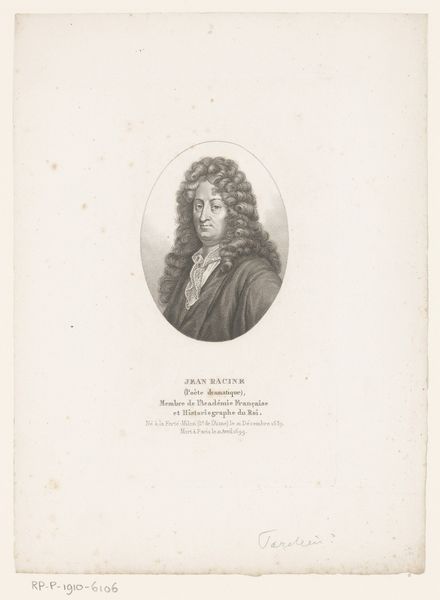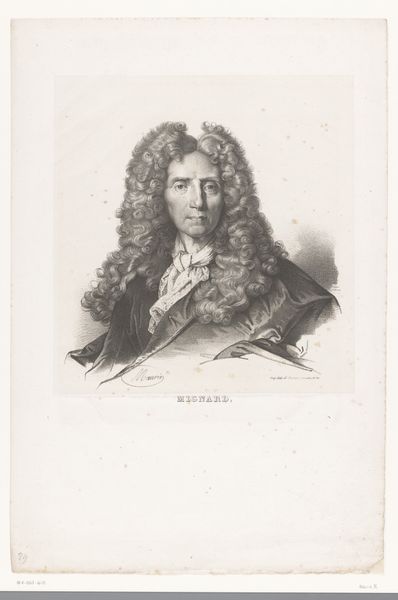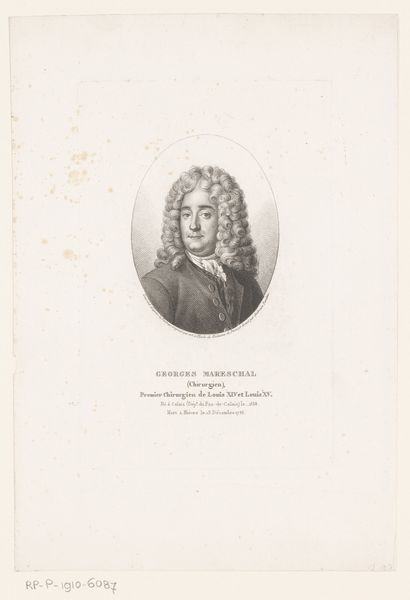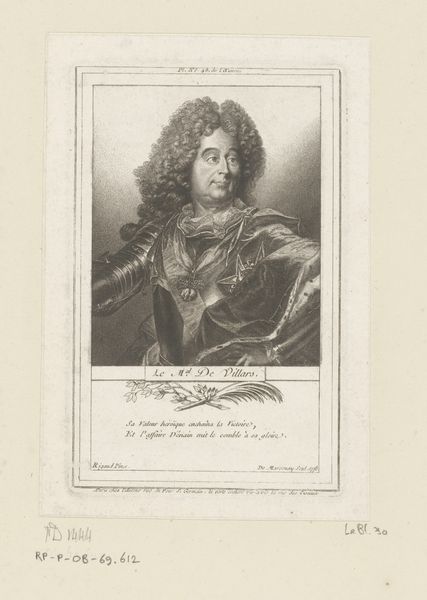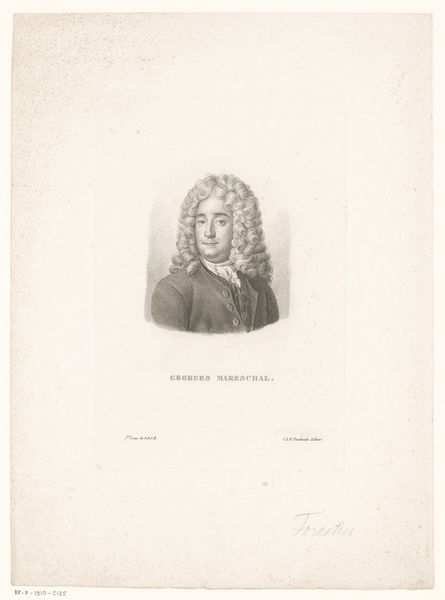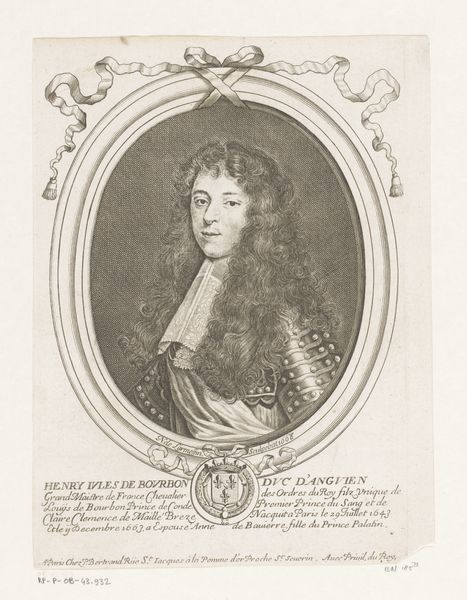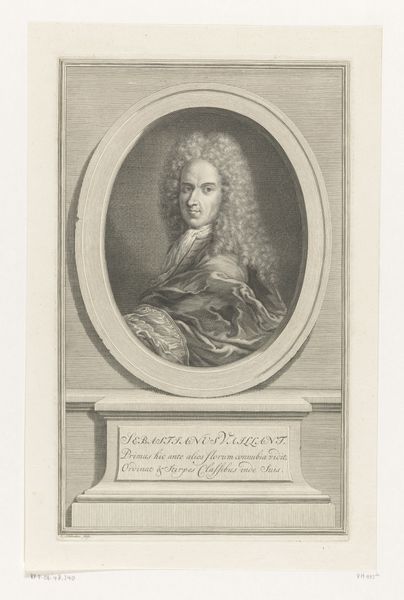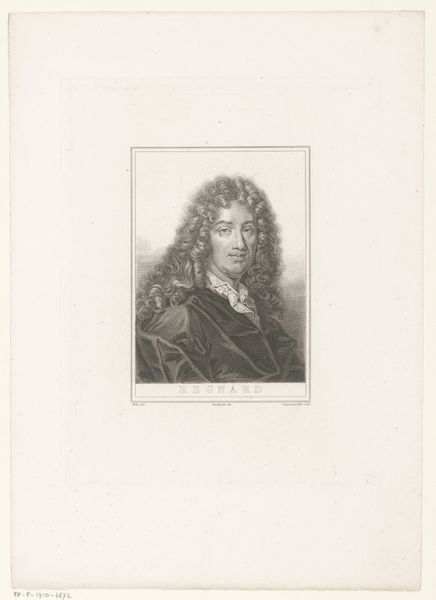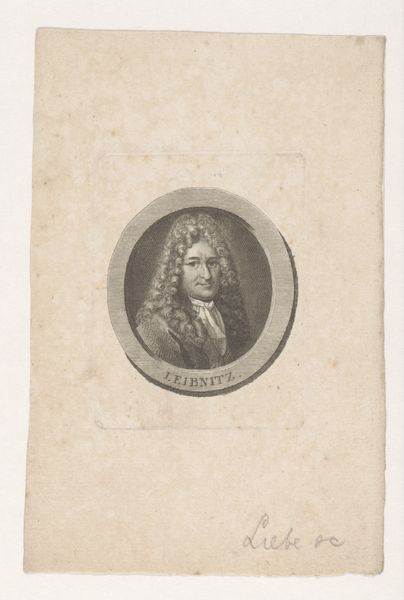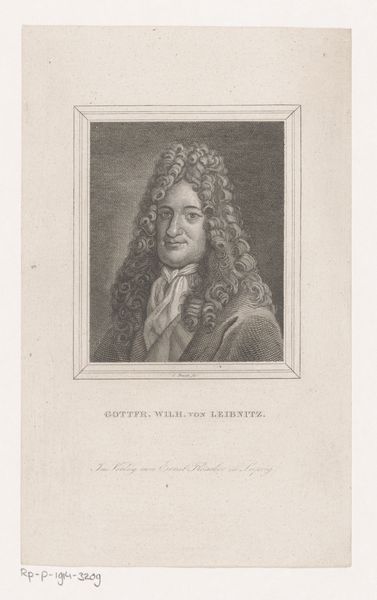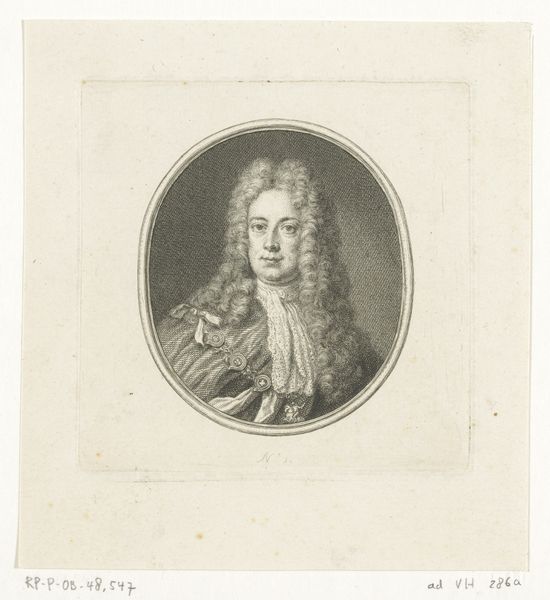
Dimensions: height 113 mm, width 83 mm
Copyright: Rijks Museum: Open Domain
Curator: Standing before us is an engraving dating between 1822 and 1879, a portrait by Adolf Hohneck titled "Portret van graaf August Christoph von Wackerbarth." Editor: Immediately, I’m drawn to the contrast—that meticulous rendering of fabric and hair against the blank paper. It speaks volumes about production… the repetitive, almost mechanical act of engraving, attempting to capture elite status. Curator: It's fascinating how prints democratized imagery. Before photography, engravings like this were crucial in disseminating images of the powerful. Wackerbarth, as a Count and Field Marshal, needed his image circulated, bolstering his authority through a visual culture accessible to a wider audience than painted portraits allowed. Editor: Exactly. And the materials—copperplate, ink, paper—were themselves commodities within a complex system of trade and power. The quality of the engraving reflects the affluence of its commissioner, becoming an extension of their power and influence, don't you think? Think of the engraver's workshop. Curator: Absolutely. And the baroque influence, even this late, points to Wackerbarth’s desire to connect himself to a particular kind of historical grandeur. He's positioning himself within a visual language that conveys power and prestige, even as societal structures were undergoing seismic shifts. The museum's role in safeguarding and displaying objects like these certainly shapes how the public views this artwork and thus shapes perceptions about power. Editor: Yes, but even then, the print medium itself signals a shift. While the portrait aims for grandeur, the print is, at heart, reproducible, hinting at early forms of mass consumption of images, diluting the uniqueness once solely tied to paintings for royalty. It's a physical thing shaped by evolving economies. Curator: A dilution, but also a diffusion! The image reaches farther, impacting more perceptions. So the engraving serves both to monumentalize Wackerbarth but also inserts him into an evolving conversation of public imagery. Museums, with their vast holdings, partake in creating that conversation by the decisions of which works, like this, they showcase, and why. Editor: A compelling convergence. The materiality reveals a fascinating intersection of artistic intent, labor, societal power structures, and evolving technological possibilities—all compressed within this engraved surface. Curator: And viewing it now, it really prompts consideration about the complex layering of reputation and visibility. Thank you for offering insights.
Comments
No comments
Be the first to comment and join the conversation on the ultimate creative platform.
